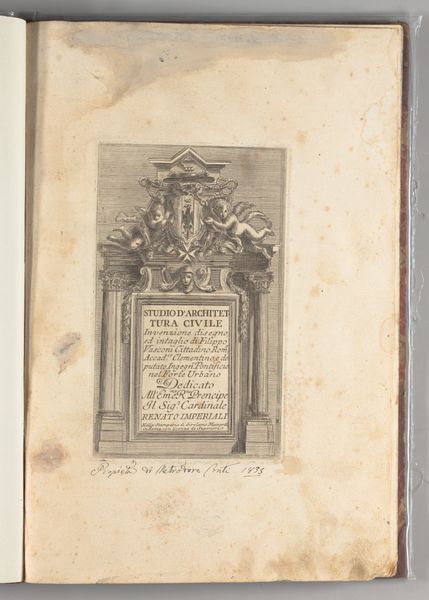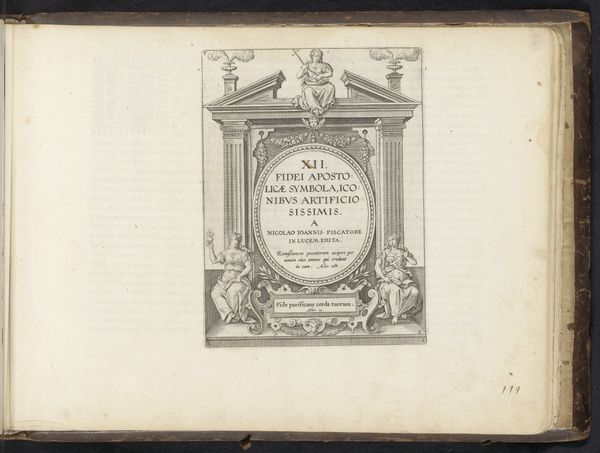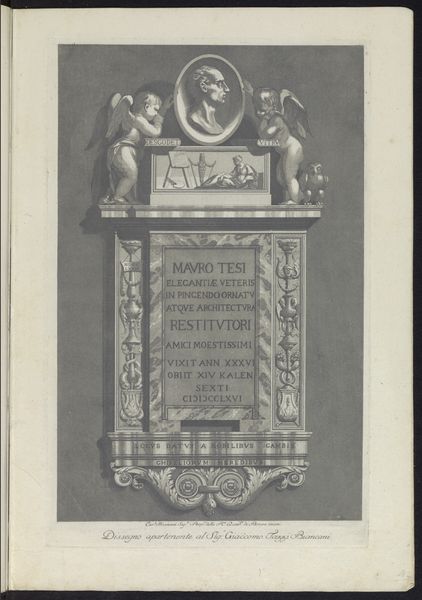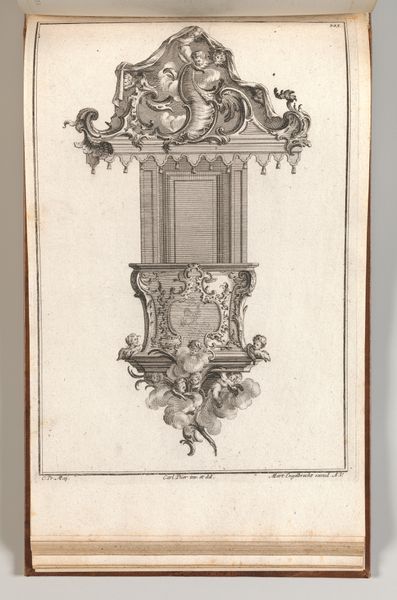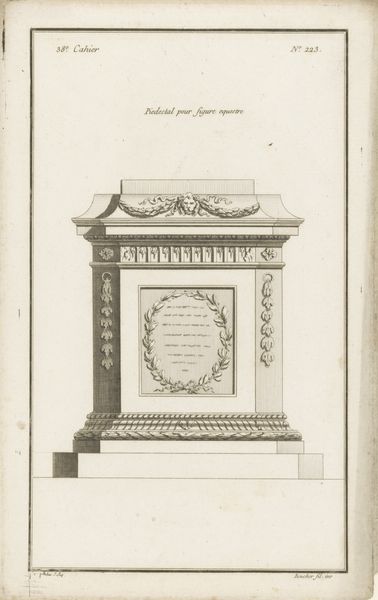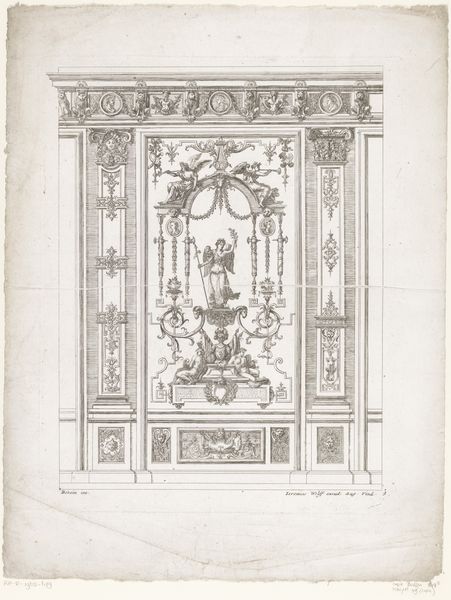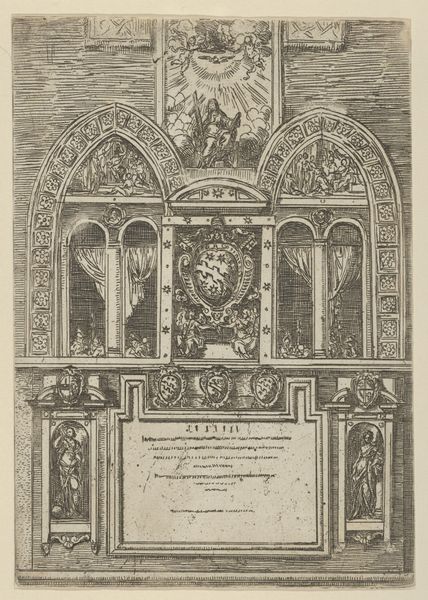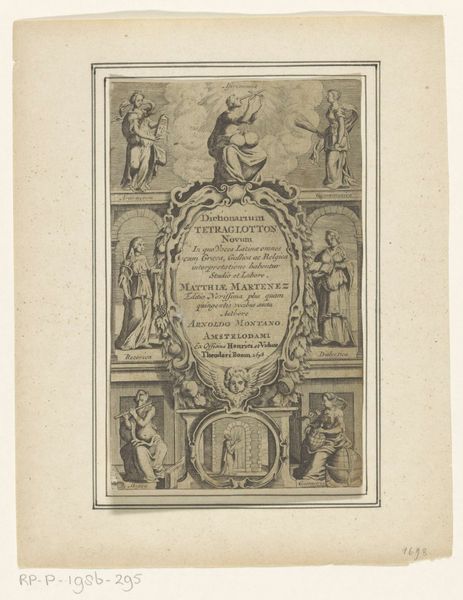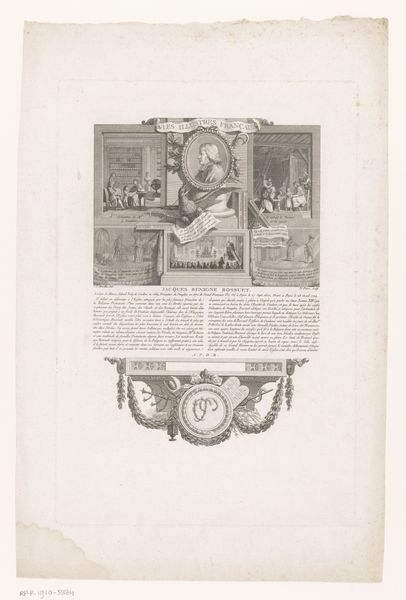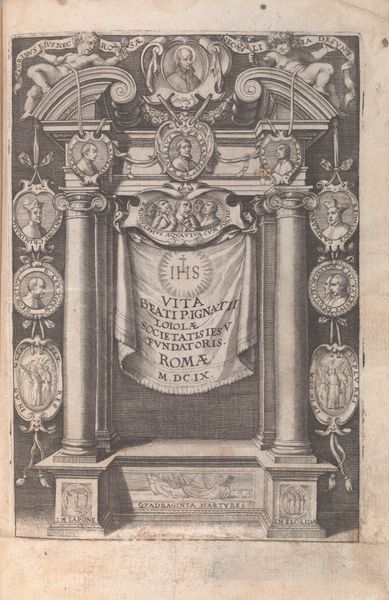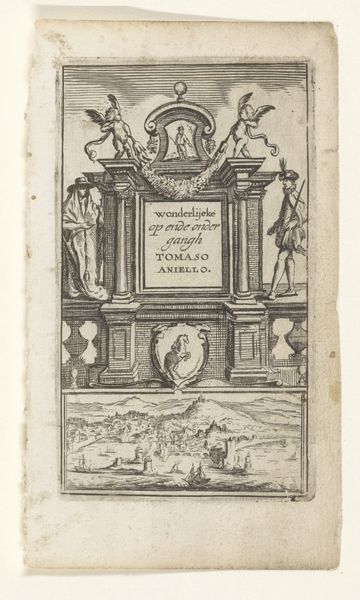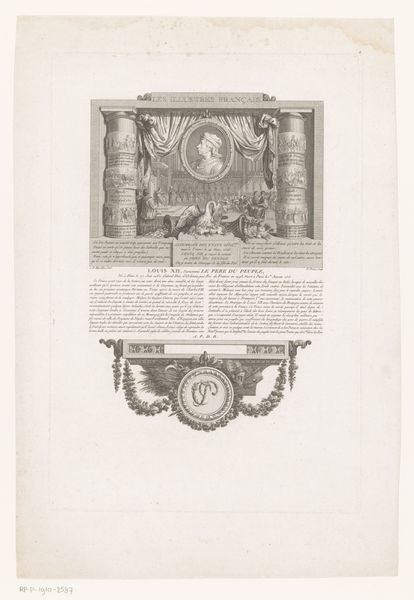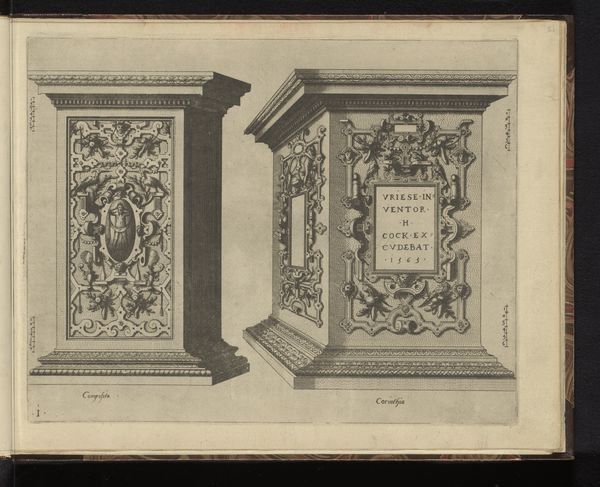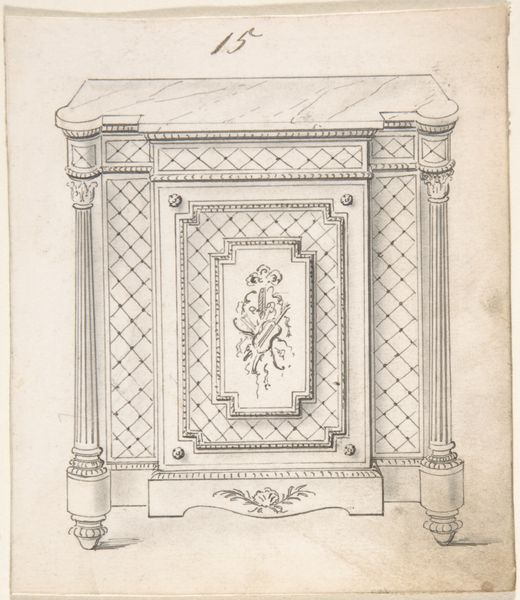
Miscellany of 17th-century Ornament Print Series: Examples of Antique Chimneypieces, Cabinets, Gueridons, Tables and Mirrors, in addition to Italian Church Facades, by illustrious architects, or a sequel to S. Bosboom 1786
0:00
0:00
drawing, print, etching, engraving, architecture
#
drawing
#
neoclacissism
# print
#
etching
#
form
#
line
#
history-painting
#
engraving
#
architecture
Dimensions: 11 13/16 × 8 × 1/2 in. (30 × 20.3 × 1.3 cm)
Copyright: Public Domain
Editor: So, here we have "Miscellany of 17th-century Ornament Print Series: Examples of Antique Chimneypieces..." from 1786, made by Jan Barend Elwe, using etching and engraving techniques. It’s incredibly detailed, almost architectural in its precision. What's fascinating is how it catalogues historical styles—what’s your read on it? Curator: This print isn't just a record of styles; it’s participating in a conversation about taste and history in late 18th-century Europe. Neoclassicism was heavily invested in rediscovering and adapting classical forms. How do you think the "antique" elements depicted relate to the socio-political climate of the time? Editor: I guess that it was intended to look back to an era that preceded the monarchy… maybe promoting a sense of republican virtue? Curator: Precisely! This idealization of the antique—including forms derived from ancient Greece and Rome, and the Italian Renaissance, represented a departure from the excesses of the Baroque and Rococo, connecting to the politics of imagery and public virtue. It presented an alternative aesthetic, tied to notions of reason, order, and civic responsibility, values that resonated during the Enlightenment. Did prints like this only circulate among architects, or do you think they had a broader public influence? Editor: That's interesting. I would have assumed they were pretty niche, maybe for wealthy patrons looking to decorate in a historically accurate style? Curator: Wealthy patrons, yes, but also aspiring artisans, members of academies, anyone involved in shaping the built environment and its decorative arts. The dissemination of visual knowledge was a crucial part of defining and spreading these stylistic movements across Europe. This type of imagery had impact, even if indirect, in forming political views. Editor: I see, it makes much more sense in this way. Thanks, I will never look at ornament prints the same way again. Curator: Indeed, by understanding the print’s place within its specific socio-political moment, we begin to recognize it as far more than just a design catalogue. It becomes a visual document loaded with ideology.
Comments
No comments
Be the first to comment and join the conversation on the ultimate creative platform.
